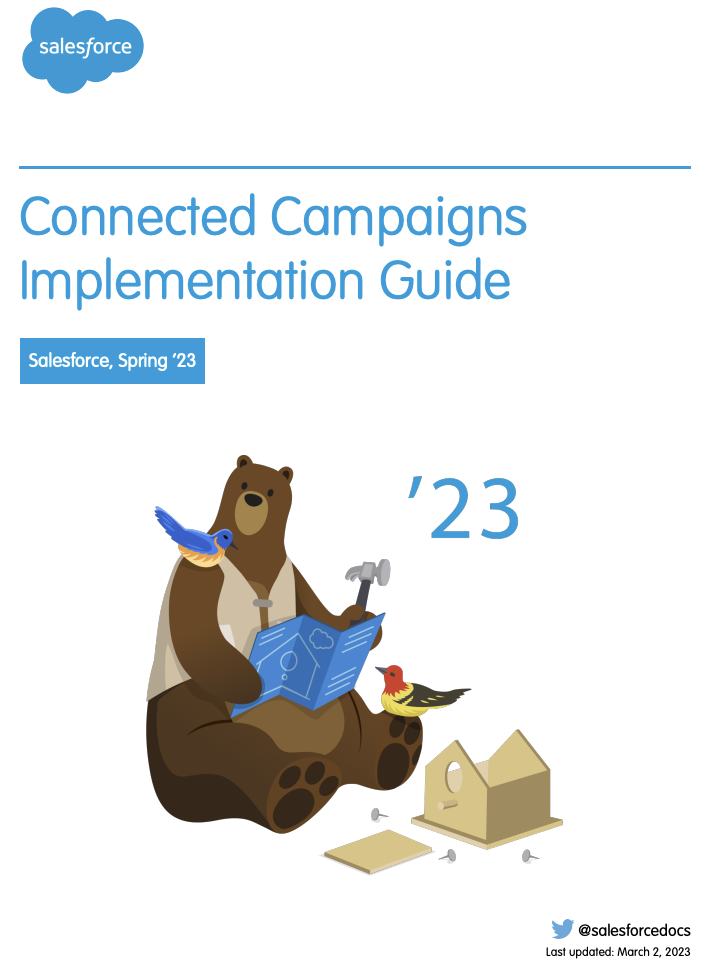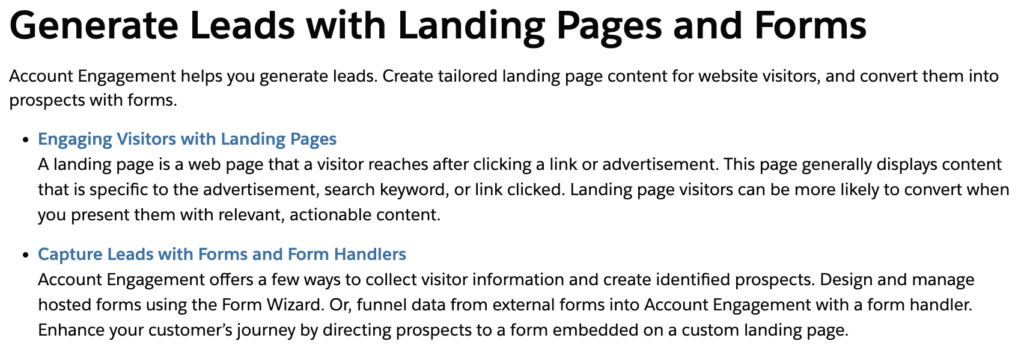New Account Engagement User MiniGuide
Welcome! Maybe you’re here because you just purchased Marketing Cloud Account Engagement1, or maybe you’re new to a company that has been using Account Engagement for a while. What should you know about the tool as you get started? Every marketing automation platform comes with its own unique features, and you, as a marketing operations professional, have questions. Below are the top five recommendations for getting up to speed in an Account Engagement org.
Note: Salesforce has changed the name of this marketing automation platform from Pardot to Marketing Cloud Account Engagement. For the purposes of this article, we’ll refer to it as Account Engagement.
1. Familiarize yourself with Account Engagement-specific terminology
The first step to becoming a wizard in any software is learning the lingo. This is valuable because by understanding the terms that Account Engagement uses, like “page action” and “form handler,” you can start to apply what you know about other marketing automation platforms to your new one. Having the right terminology on hand will help immerse you in the tool. Luckily, Account Engagement shares a wealth of resources for learners, including this very useful glossary.

2. Familiarize yourself with Account Engagement navigation and UI
The next important milestone on your Account Engagement journey is getting familiar with the navigation and UI. Since you’ve gotten to understand some of the standard Account Engagement terms, now you can learn how the tool is structured, what actions take place where, and why organizing your Account Engagement instance matters. As a user, you can choose between two interface versions: the standalone Account Engagement app and an Account Engagement Lightning app. And while the Engagement Studio works the same way on both interfaces, the Lightning app offers enhanced builders for marketing assets including email templates, email content, and landing pages. Within the UI, you can set up folders to organize your marketing assets, with nested folders up to 16 levels. This will also be a good time to review or set up settings specific to your business unit.

3. Understand how Account Engagement and Salesforce interact
One of the great benefits of Account Engagement is that it is a Salesforce product. The connection between your SFDC objects and your Account Engagement campaigns can hold a lot of value for targeting and segmenting audiences, passing information back and forth, and enabling your sales team to act on marketing-led efforts. However, it is important to understand how that connection works and work closely with your SFDC admin to make sure information can flow back and forth smoothly.
For example, both leads and contacts in Salesforce are considered Prospects in Account Engagement. Processes like assignment actions need to play nicely with assignments that are already created on the synced SFDC records. Here’s a handy chart that explains how assignment actions operate in different scenarios. Another important change coming to Account Engagement is related to Opt-Out rules. Starting on July 11, 2023, users must choose whether the Opt-Out field in Account Engagement or Salesforce will be used as the source of truth, rather than relying on the most recently updated field. Some custom mapping or configuration might be necessary in order to make sure that the most recent opt-out information is updated.
You might also be curious about how your Account Engagement campaigns relate to your SFDC campaigns. The Connected Campaigns Implementation Guide is a great resource to get this feature up and running. With connected campaigns, you can apply Campaign Influence attribution models, Engagement History, and Einstein Campaign Insights.

4. Learn about Account Engagement-specific tools
Now that you’ve learned how Account Engagement will interact with your Salesforce org, you can start diving into what Account Engagement offers, as well as some of its limitations.
If you are more familiar with a marketing automation platform like Adobe Marketo Engage, you may find that the automation rules offer less flexibility. However, there are several ways in which Account Engagement offers automation. Get to know the difference between automation tools, including Automation Rules, Segmentation Rules, Completion Actions, and Page Actions, and which option is right for your objectives. Be mindful of instance limits. Completion actions, for example, are limited to 15 total standard or conditional completion actions on an asset, and conditional groups are limited to 6 conditional groups on an asset.

You may be wondering, can I personalize my email messaging in Account Engagement? Absolutely! Account Engagement Handlebar Merge Fields (HML) allow you to reference prospect field values, and even allow for some conditional logic to display a default value when a field is empty. HML can also be used on landing pages and forms.
You can set up Account Engagement Campaigns to track your marketing activities. These campaigns can connect to your Salesforce campaigns. One thing to note: a prospect is only associated with one campaign, identifying the first interaction that your prospect takes, so it is important to consider how this impacts reporting and attribution.
5. Learn how to use Account Engagement to meet your business needs
Now it’s time to get to work! Look at what Account Engagement’s features can do for your business and build out a plan of action for your org. Set up forms, form handlers, and landing pages to start generating leads. Engage your audience with emails and build advanced engagement programs using Engagement Studio. You can even connect third-party apps to tie more of your marketing activity together. Do you want to apply lead scoring? How about setting a lead source to better understand attribution? Account Engagement can do that.

Conclusion
Without a doubt, there’s a lot to learn and you won’t become an expert overnight. However, Account Engagement’s powerful marketing automation tools can save you time and help you engage a wider prospect audience, filling out your pipeline and getting you to your company’s revenue goals.
1In April 2022, Salesforce renamed Pardot to Marketing Cloud Account Engagement.







